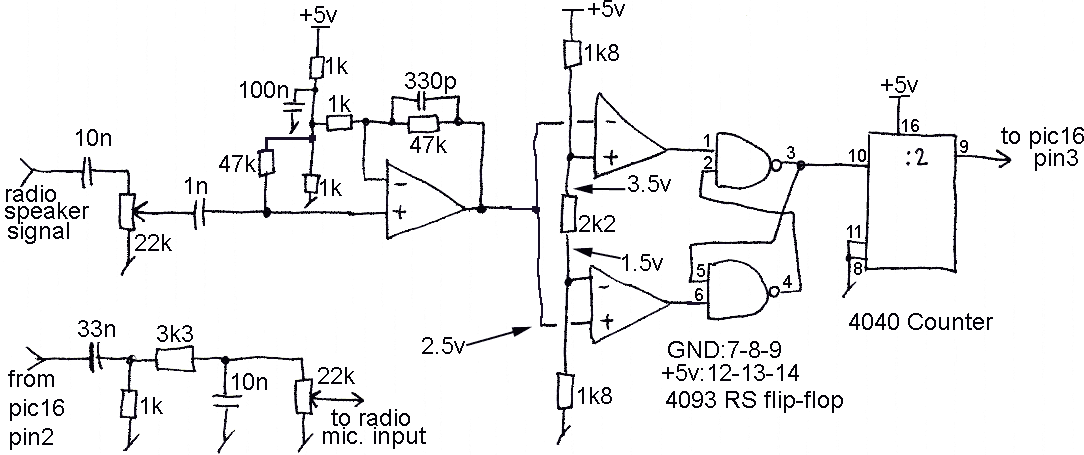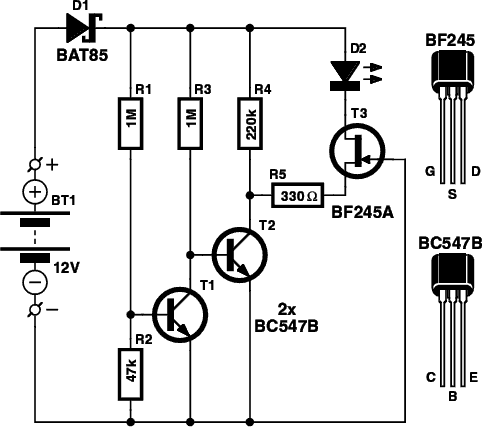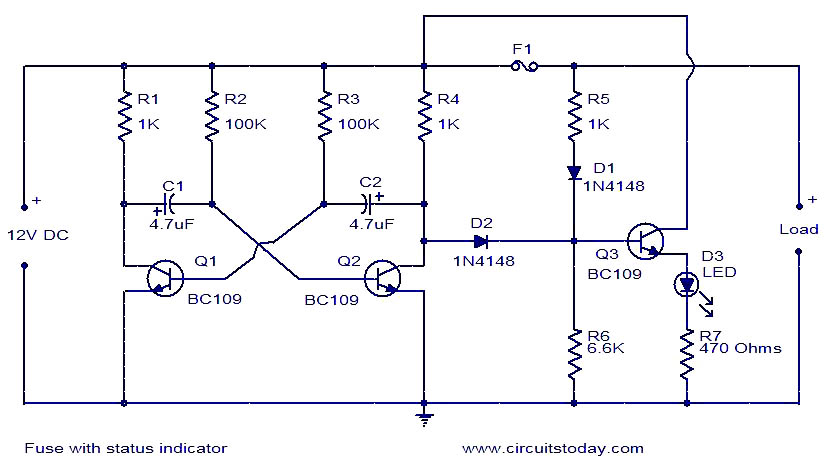
mobile incoming call indicator

This circuit helps to avoid the annoyance of mobile phone rings while at home. It provides a visual indication when placed near a mobile phone, even if the ringer is turned off. When a call is received, the transmitter within the mobile phone activates, emitting a frequency of approximately 900 MHz. The coil L1 captures these oscillations through induction and feeds them to the base of transistor Q1, activating it. As the collector of Q1 is connected to pin 2 of IC1 (NE555), the IC is triggered, causing the LED connected to its output pin (pin 3) to blink. The blinking LED serves as an indication of an incoming call. The coil L1 can be constructed by winding 150 turns of 36 SWG enameled copper wire around a 5 mm diameter plastic former, or a 10 µH coil can be purchased if available.
The circuit operates by detecting the electromagnetic field generated by the mobile phone during an incoming call. The design utilizes a simple yet effective method of induction, where the coil L1 acts as an antenna to capture the high-frequency signals emitted by the phone. The captured signal is then amplified by transistor Q1, which is configured as a switch. When the signal is strong enough, it turns on the transistor, allowing current to flow from the power supply through the LED connected to the NE555 timer's output.
The NE555 timer is configured in monostable mode, where it is triggered by the rising edge of the signal from Q1. The output at pin 3 of the NE555 will go high for a duration determined by the resistor and capacitor connected to the timer, causing the LED to blink. This blinking serves as a visual alert to the user, indicating that a call is incoming.
For the construction of coil L1, precision in the number of turns and the wire gauge is critical, as these factors influence the coil's inductance and its effectiveness in capturing the desired frequency. The choice of a 10 µH coil can also simplify assembly for those who prefer not to wind their own coil, ensuring consistent performance.
Overall, this circuit is an innovative solution for individuals seeking to minimize disturbances from mobile phone rings at home while still being alerted to incoming calls.This circuit can be used to escape from the nuisance of mobile phone rings when you are at home. This circuit will give a visual indication if placed near a mobile phone even if the ringer is deactivated. When a call is coming to the mobile phone, the transmitter inside it becomes activated. The frequency of the transmitter is around 900MHz. The co il L1 picks up these oscillations by induction and feds it to the base of Q1. This makes the transistor Q1 activated. Since the Collector of Q1 is connected to the pin 2 of IC1 (NE555), the IC1 is triggered to make the LED connected at its output pin (pin 3) to blink. The blinking of the LED is the indication of incoming call. The coil L1 can be made by making 150 turns of 36 SWG enameled copper wire on a 5mm dia plastic former.
Or you can purchase a 10 uH coil from shop if available. 🔗 External reference
The circuit operates by detecting the electromagnetic field generated by the mobile phone during an incoming call. The design utilizes a simple yet effective method of induction, where the coil L1 acts as an antenna to capture the high-frequency signals emitted by the phone. The captured signal is then amplified by transistor Q1, which is configured as a switch. When the signal is strong enough, it turns on the transistor, allowing current to flow from the power supply through the LED connected to the NE555 timer's output.
The NE555 timer is configured in monostable mode, where it is triggered by the rising edge of the signal from Q1. The output at pin 3 of the NE555 will go high for a duration determined by the resistor and capacitor connected to the timer, causing the LED to blink. This blinking serves as a visual alert to the user, indicating that a call is incoming.
For the construction of coil L1, precision in the number of turns and the wire gauge is critical, as these factors influence the coil's inductance and its effectiveness in capturing the desired frequency. The choice of a 10 µH coil can also simplify assembly for those who prefer not to wind their own coil, ensuring consistent performance.
Overall, this circuit is an innovative solution for individuals seeking to minimize disturbances from mobile phone rings at home while still being alerted to incoming calls.This circuit can be used to escape from the nuisance of mobile phone rings when you are at home. This circuit will give a visual indication if placed near a mobile phone even if the ringer is deactivated. When a call is coming to the mobile phone, the transmitter inside it becomes activated. The frequency of the transmitter is around 900MHz. The co il L1 picks up these oscillations by induction and feds it to the base of Q1. This makes the transistor Q1 activated. Since the Collector of Q1 is connected to the pin 2 of IC1 (NE555), the IC1 is triggered to make the LED connected at its output pin (pin 3) to blink. The blinking of the LED is the indication of incoming call. The coil L1 can be made by making 150 turns of 36 SWG enameled copper wire on a 5mm dia plastic former.
Or you can purchase a 10 uH coil from shop if available. 🔗 External reference





